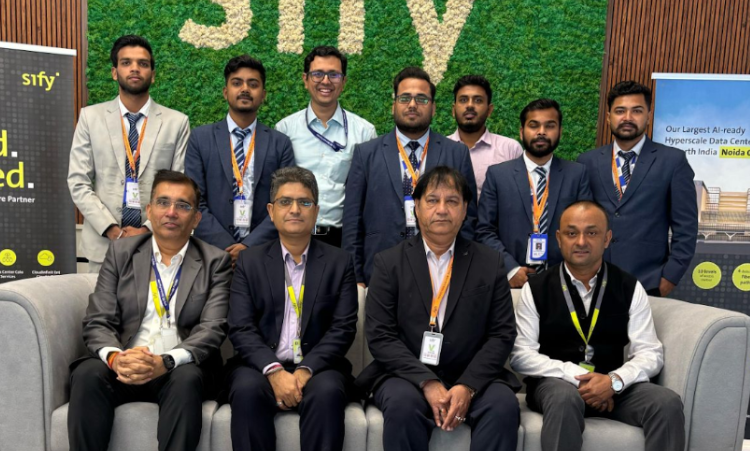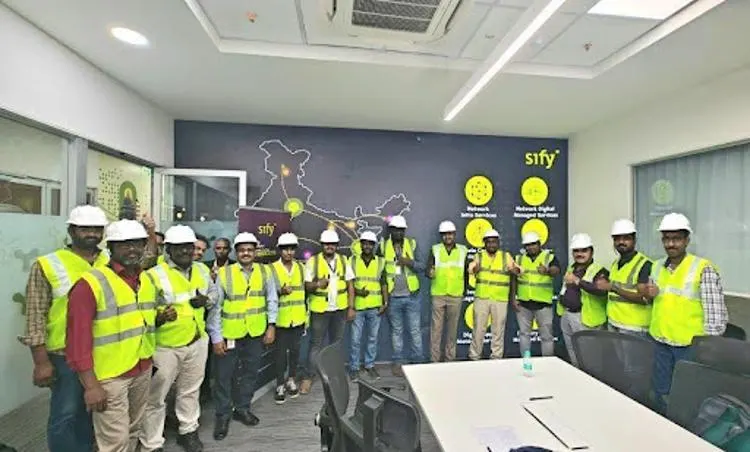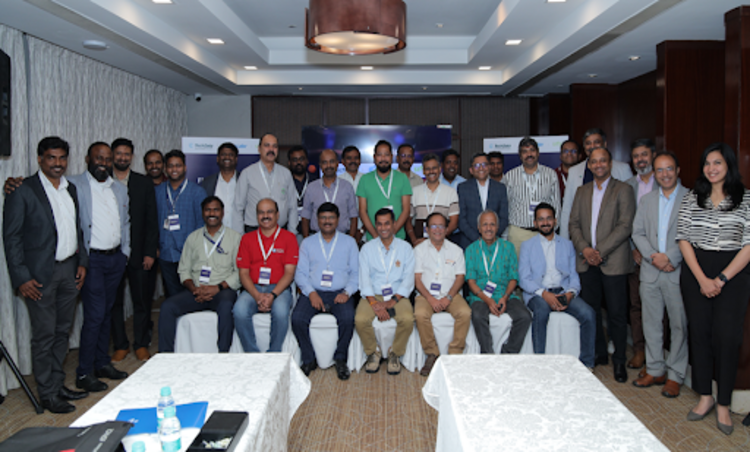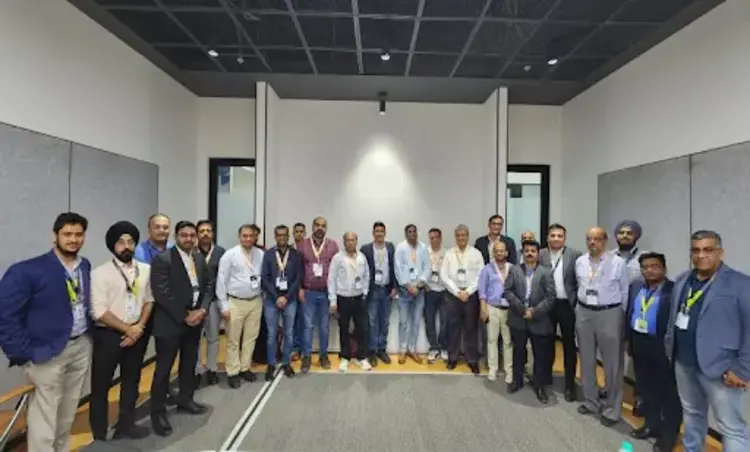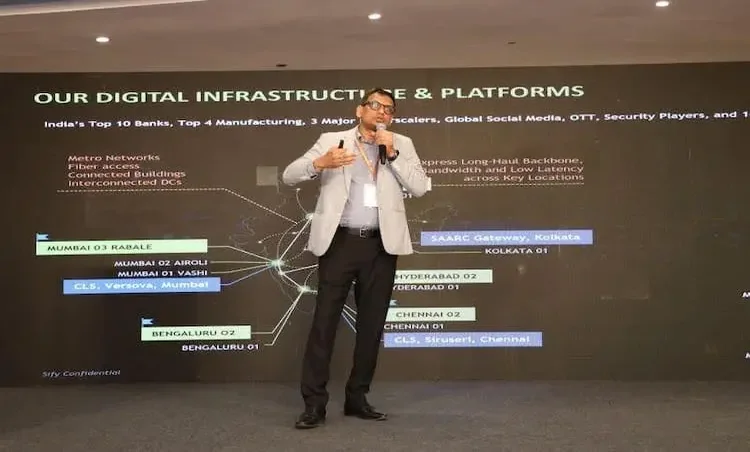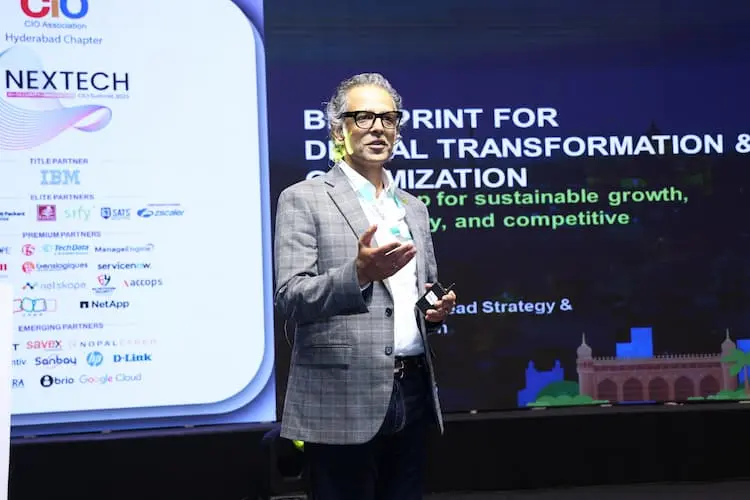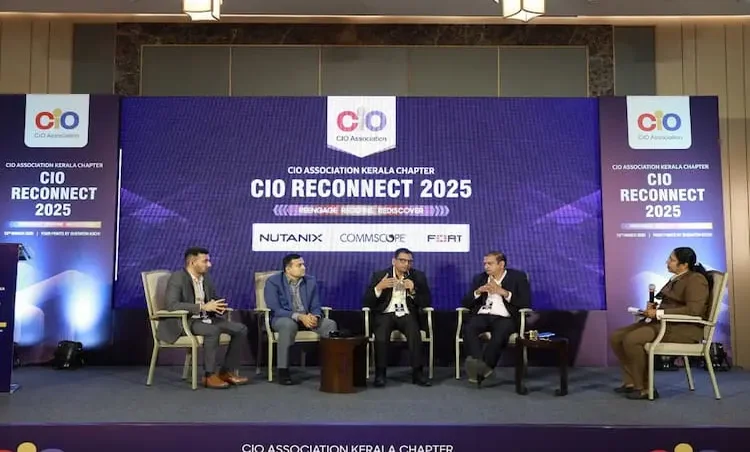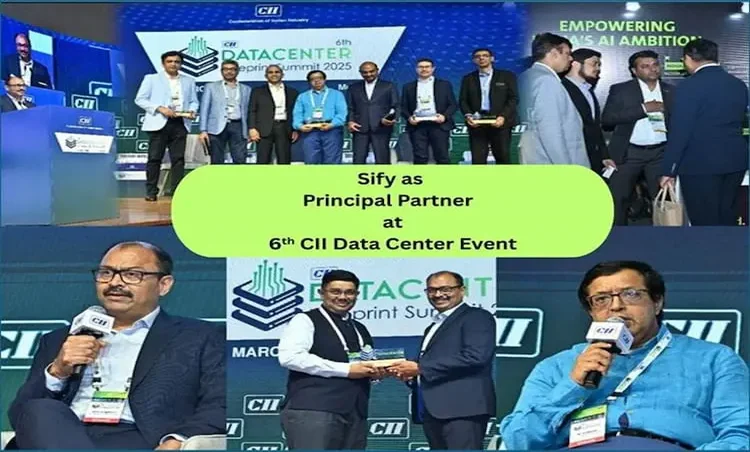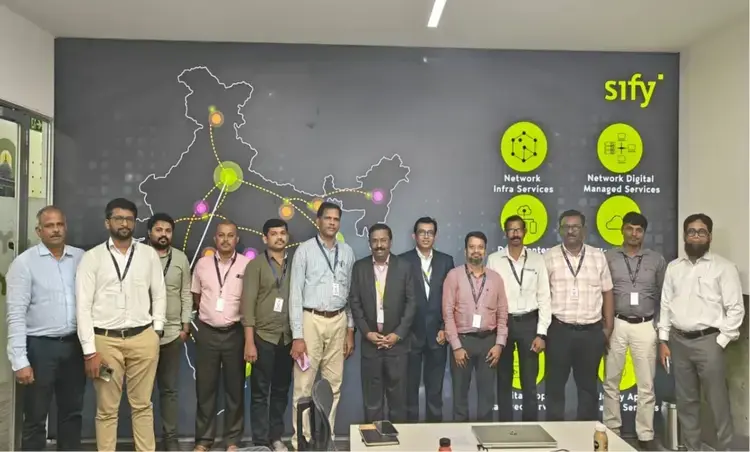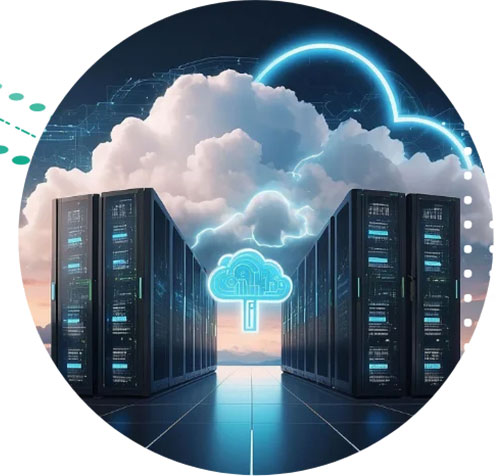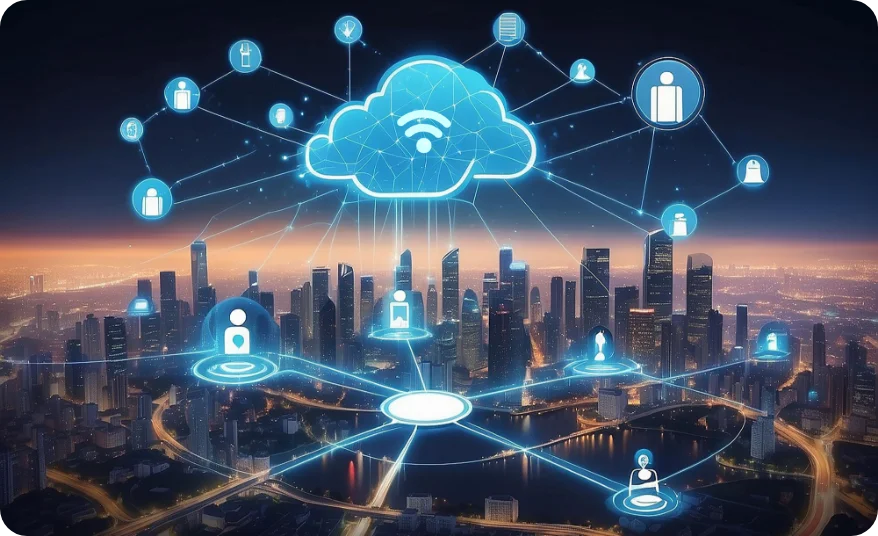Sify’s Largest Hyperscale AI-ready Data Center Noida
We hosted Vserv Infosystems Private Limited and their young brigade for an engaging discussion on the future of AI.
📈 Nitin Khanna discussed about market trends and Sify’s commitment to empowering businesses with comprehensive digital solutions.
💡 Anuj Kashyap delivered a presentation on the innovations driving our data centers forward.
The day wrapped up with a guided tour of the facility, showcasing our robust and scalable infrastructure ready for AI
AI-Ready Digital Infrastructure
We were delighted to host over 16 CXOs for an insightful session on the latest advancements in 𝗔𝗜-𝗿𝗲𝗮𝗱𝘆 𝗱𝗶𝗴𝗶𝘁𝗮 𝗶𝗻𝗳𝗿𝗮𝘀𝘁𝗿𝘂𝗰𝘁𝘂𝗿.
𝐊𝐞𝐲 𝐡𝐢𝐠𝐡𝐥𝐢𝐠𝐡𝐭𝐬:
- M.S. Ramasamy spoke about Sify’s overall vision and leadership in digital infrastructure.
- Ezhilarasan S elaborated on Sify’s hybrid cloud ecosystem, enabling seamless enterprise transformation.
- Swaminathan Krishnamoorthy and Sri Krishnan presented an in-depth view of Sify’s AI-ready data center capabilities, focusing on 𝘀𝗰𝗮𝗹𝗮𝗯𝗶𝗹𝗶𝘁𝘆, 𝘀𝘂𝘀𝘁𝗮𝗶𝗻𝗮𝗯𝗶𝗹𝗶𝘁𝘆 𝗮𝗻𝗱 𝗮𝗱𝘃𝗮𝗻𝗰𝗲𝗱 𝗰𝗼𝗼𝗹𝗶𝗻𝗴 𝘀𝗼𝗹𝘂𝘁𝗶𝗼𝗻𝘀.
The day concluded with an immersive tour of our data center facility, highlighting our robust and scalable AI-ready infrastructure.
Sify & Zscaler Roundtable Event in Chennai
Sify recently concluded a joint roundtable event with Zscaler on the theme ‘Future-Proofing Cybersecurity with Zero Trust & AI’ on 24th January 2025 in Chennai. The event attracted 20 industry leaders & experts who explored how Sify & Zscaler’s Zero Trust and AI-driven solutions can strengthen threat protection and enhance data security.Following were the key discussion points:
- Overcoming challenges in building a robust cybersecurity posture
- The importance of Zero Trust in securing organizational networks
- Real-world applications of AI for cyber threat detection and prevention
- Leveraging AI to protect sensitive data and ensure privacy
Speakers
Suresh Gummaraju , General Manager – Managed Network Services;
Joe Xavier Savariar , CRO South 1;
Dr. Ganesh Nagaraj , Senior Solutions Consultant & Risk Management Specialist, Zscaler.
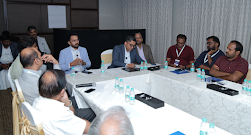
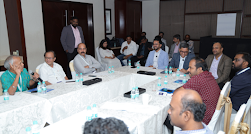
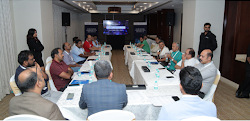
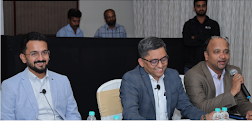
The Largest Data Center Mumbai
We recently hosted 𝟭𝟱+ 𝗖𝗜𝗢𝘀 for a discussion on AI-ready data centers, where Gitesh Mahajan shared insights on India’s role as a data center hub, key challenges, and future-ready architecture.
The day wrapped up with a guided tour of the facility, showcasing our robust and scalable infrastructure ready for AI.
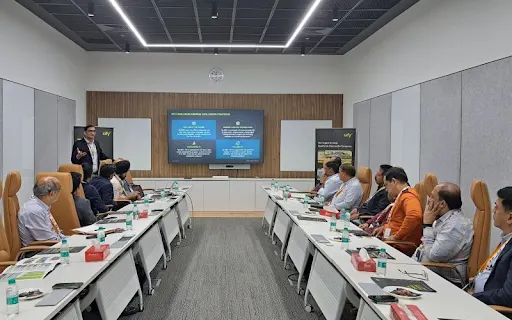
Sify at Vserv AI Conclave: Enabling AI-Driven Digital Transformation
Sushant Dubey presented strategies for AI adoption, cloud transformation, and intelligent enterprise infrastructure to accelerate business growth.
Rajat Gossain engaged with industry leaders in a Panel Discussion on sustainable IT solutions, AI-driven automation, and next-gen connectivity.
Sify looks forward to empower industries with AI-powered digital platforms and infrastructure to ensure scalability, productivity, and security across the hybrid IT landscape.
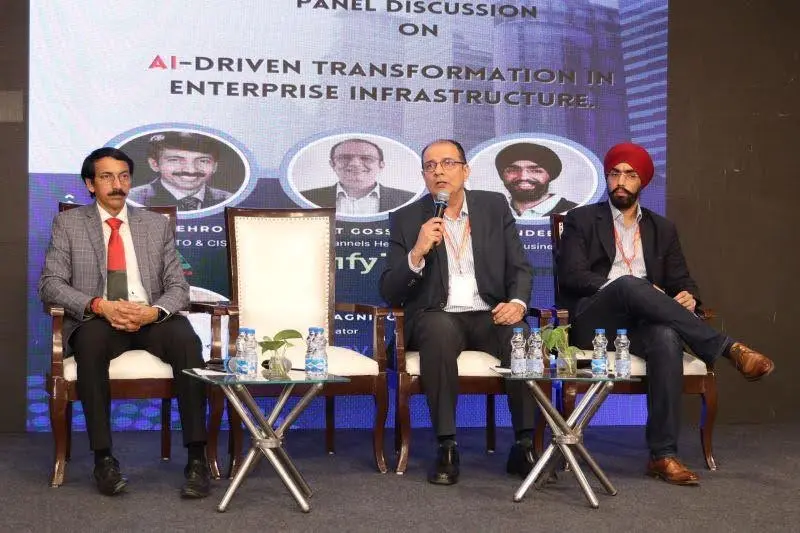
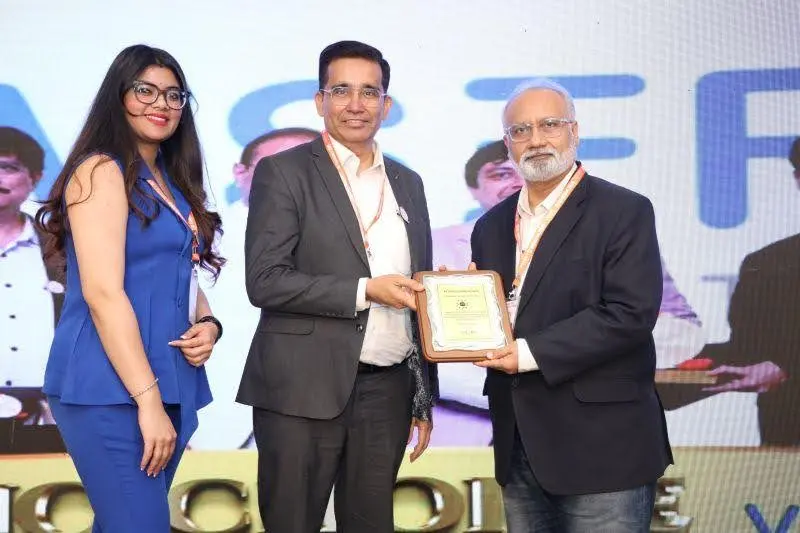
Sify at NexTech Summit’25
Sify was elated to participate as ‘Elite Partner’ and sponsor at CIO Klub Hyderabad Chapter’s Anniversary Event – “NexTech Summit’25” on March 8th, 2025, at Novotel, Hyderabad. The event was attended by 117 Key IT Decision makers. It provided us with a great platform to engage with top technology leaders, explore the forefront of tech innovations, understand their priorities, and showcase our vision and capabilities in driving digital transformation.
Event Highlights:
- Keynote: Aman Mehra, Head Strategy & Transformation, presented a session on the theme “Blueprint for Digital Transformation & Optimization” highlighting Telangana & Andhra Pradesh’s emergence as an IT innovation hub. He emphasized Sify’s 25-year journey, showcasing investments in AI-ready data centers, scalable cloud solutions, and high-performance networks to drive growth, productivity, and competitiveness.
- Sify Booth – 100+ delegates visited our booth at the exhibition, where they were engaged with Sify experts on their digital needs and how Sify can be the bridge to their enterprise transformation.
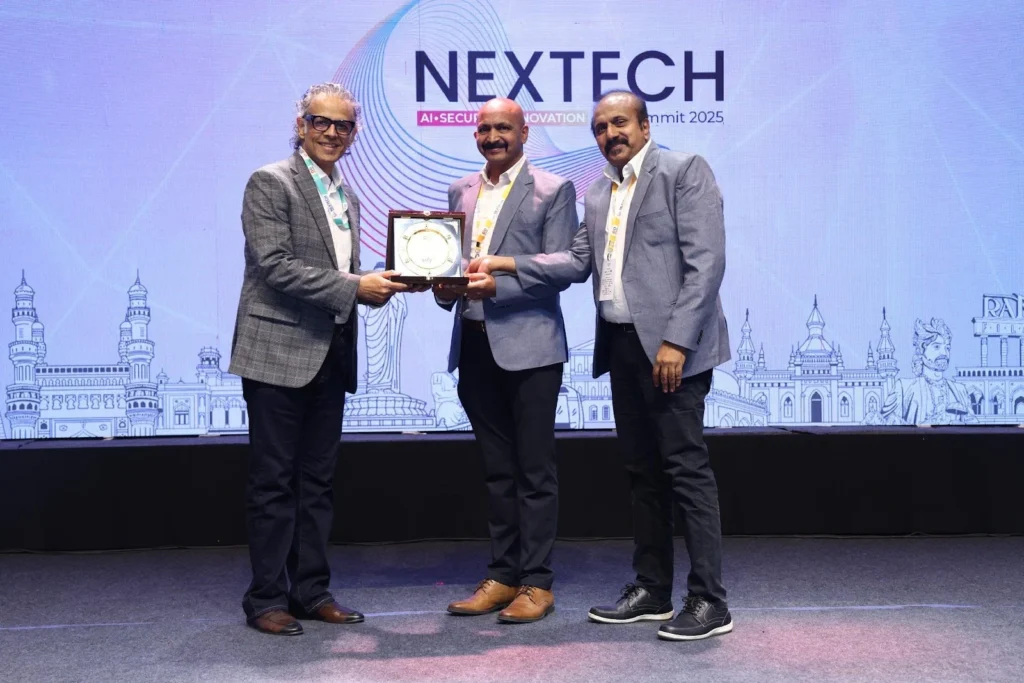
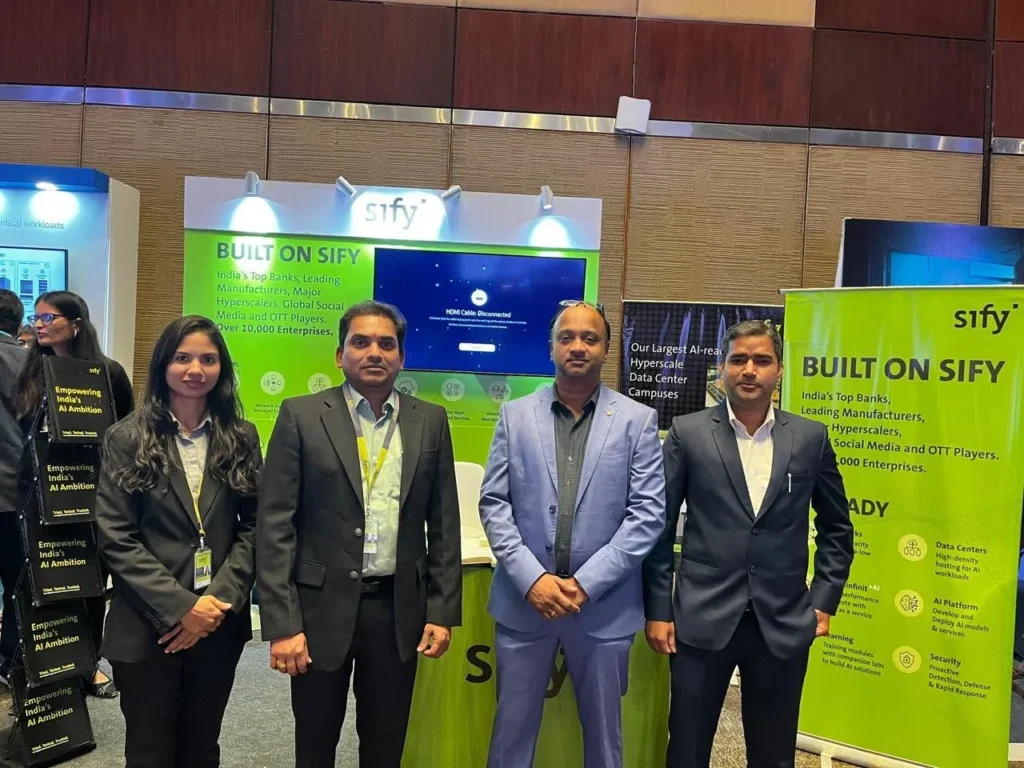
Sify at CIO Reconnect 2025 at Kerala
Sify was proud to participate as the ‘Diamond Partner’ and sponsor at CIO Klub Kerala Chapter’s “CIO ReConnect 2025” on March 15th, 2025, at Sheraton, Kochi. The event was attended by 60+ CIOs & other key IT Decision makers. The event provided a valuable platform to engage with top technology leaders, explore emerging tech innovations, and showcase our vision and capabilities in driving digital transformation.
Event Highlights:
- Keynote: Sushant Dubey, EVP Digital Services, delivered an insightful keynote on “Blueprint for Digital Transformation & Optimization,” emphasizing the role of AI-driven digital infrastructure, scalable cloud platforms, and high-performance networks in accelerating growth, productivity, and competitiveness. He also highlighted how Sify’s AI-ready data centers and CloudInfinit + AI are empowering enterprises to navigate hybrid IT, cybersecurity, and automation challenges.
- Panel Discussion: “Maximizing ROI on IT Investments – Balancing Cost and Innovation” Sushant Dubey was one of the four distinguished panelists in this thought-provoking discussion, where he shared insights on how CIOs can optimize IT budgets while strategically investing in transformative technologies to drive innovation.
- Exclusive Sify Roundtable: “Innovation, Insights, and Investments in 2025 – The CIO Perspective”
Our team engaged in a roundtable discussion with 10 CIOs, exchanging valuable insights on the evolving role of technology in driving business growth, the future of IT investments, and how enterprises can innovate while staying cost-efficient.
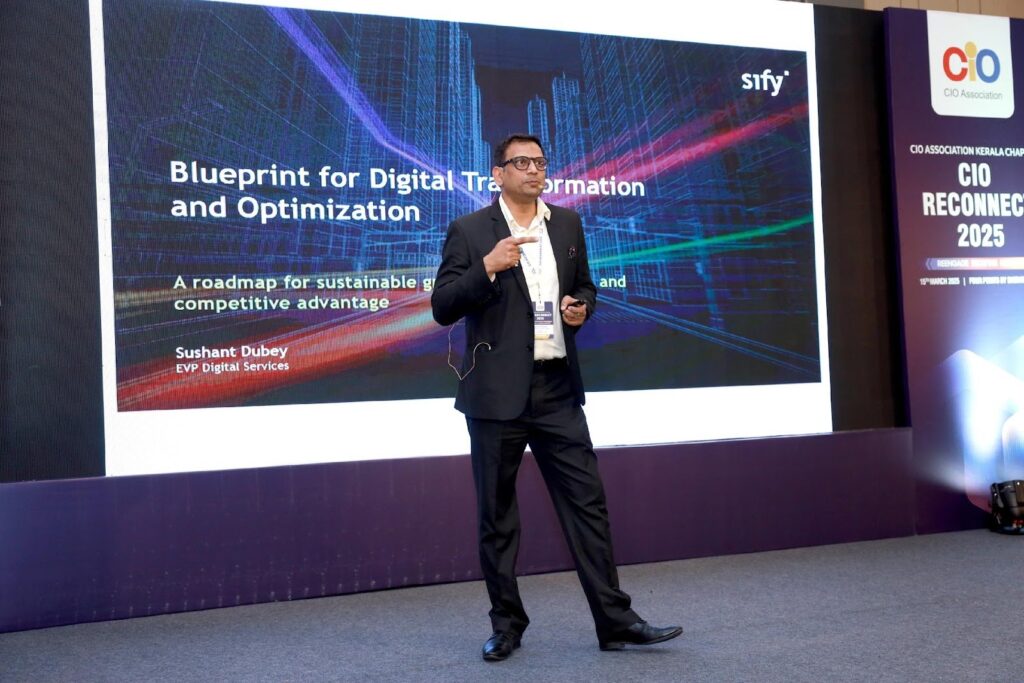
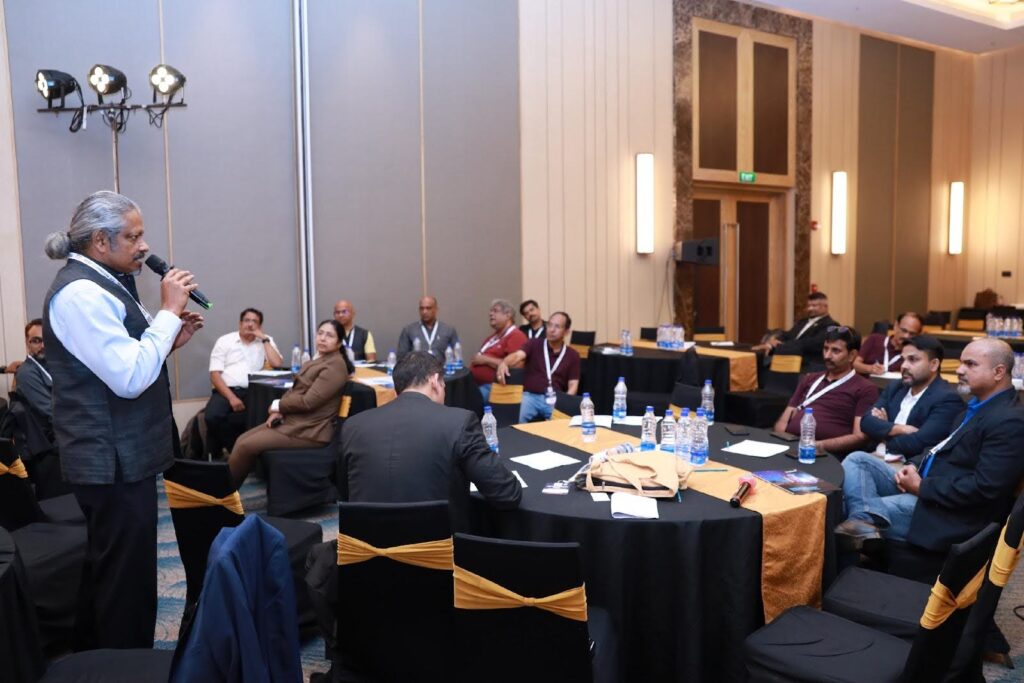
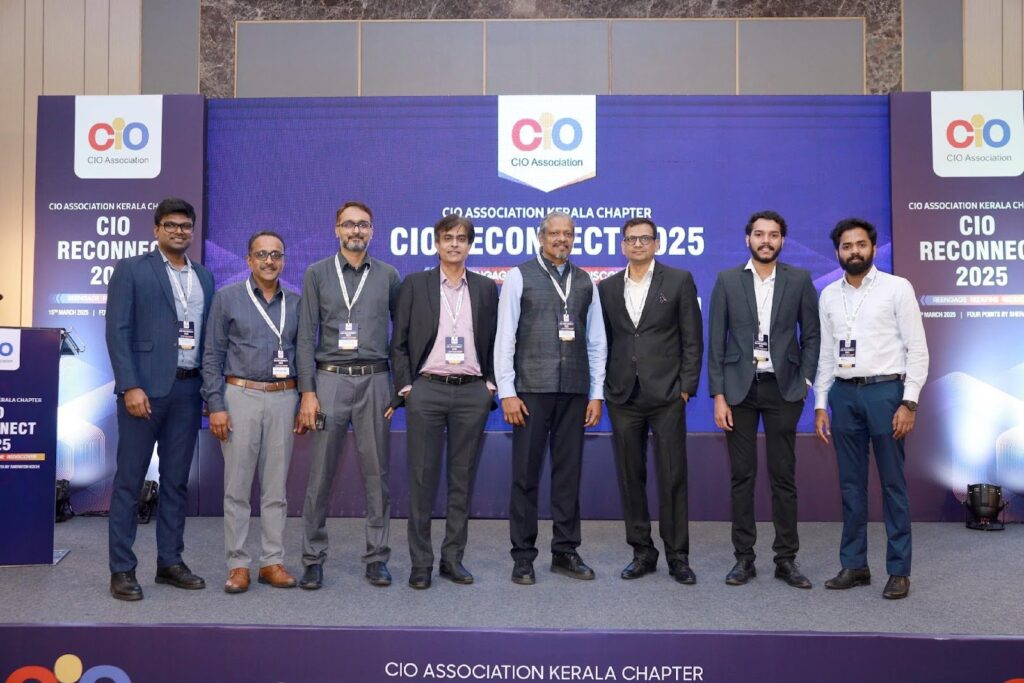
Building Sustainable Digital Foundations for Datacenters
Sify participated in the 6th CII Datacenter Blueprint Summit 2025 Event in Mumbai themed “Building Sustainable Digital Foundations for Datacenters” as Principal Partner on Thursday, 20th March 2025.
The event was attended by senior government officials, regulatory authorities and industry stalwarts to engage in a dialog for creating cohesive action plans for the inclusive growth of the sector.
The event was attended by 300+ delegates. Govt dignitaries marked their presence at the event like :
- Dr P Anbalagan, IAS – Secretary Industries, Government of Maharashtra
- P Velrasu, IAS – Chief Executive Officer – Maharashtra Industrial Development Corporation (MIDC)
- Kaustubh Dhavse – Joint Secretary & Officer on Special Duty to Hon’ble Chief Minister of Maharashtra, Government of Maharashtra
Sify Speakers
- Inauguration session and Panel Discussion by Sharad Agarwal on “Changing Datacenter Landscape in India and Worldwide – Challenges and Opportunities”.
- A Panel Discussion by Girish Dhavale on “Unfolding AI Landscape & Opportunities for Datacenter Service Providers”
Key discussion points include:
- India’s Data Center industry is expanding rapidly, driven next-gen high density workloads, demanding sustainability and innovation.
- Showcased Sify’s Largest AI-Ready Data Center Campus, Mumbai 03 is Future ready and capable to cater growing customer demands of a seamless secure and scalable Data Center
- How GPU-as-a-Service and AI-driven workload regulation are transforming Data Center operations
- How Sify delivers sustainable cooling solutions, including liquid cooling, to enhance energy efficiency, while integrating AI into cloud infrastructure to optimize performance and scalability for customers.
IGBC Platinam Rated Green Data Center Campus Chennai
- M.S.Ramasamy shared insights on Sify’s overall vision and leadership in digital infrastructure.
- Ezhilarasan S highlighted Sify’s hybrid cloud ecosystem, enabling seamless enterprise transformation.
- Swaminathan Krishnamoorthy and Sri Krishnan presented an in-depth view of Sify’s AI-ready data center capabilities, focusing on 𝘀𝗰𝗮𝗹𝗮𝗯𝗶𝗹𝗶𝘁𝘆, 𝘀𝘂𝘀𝘁𝗮𝗶𝗻𝗮𝗯𝗶𝗹𝗶𝘁𝘆 𝗮𝗻𝗱 𝗮𝗱𝘃𝗮𝗻𝗰𝗲𝗱 𝗰𝗼𝗼𝗹𝗶𝗻𝗴 𝘀𝗼𝗹𝘂𝘁𝗶𝗼𝗻𝘀.
The day wrapped up with an immersive tour of the data center facility, showcasing our robust and scalable infrastructure ready for AI.
Sify at World Economic Forum- Davos
At the 𝗪𝗼𝗿𝗹𝗱 𝗘𝗰𝗼𝗻𝗼𝗺𝗶𝗰 𝗙𝗼𝗿𝘂𝗺 𝟮𝟬𝟮𝟱 in Davos, our 𝗛𝗲𝗮𝗱 𝗼𝗳 𝗦𝘁𝗿𝗮𝘁𝗲𝗴𝘆 𝗮𝗻𝗱 𝗧𝗿𝗮𝗻𝘀𝗳𝗼𝗿𝗺𝗮𝘁𝗶𝗼𝗻 Aman Mehra and Anjali Gupta met with the esteemed 𝗖𝗵𝗶𝗲𝗳 𝗦𝗲𝗰𝗿𝗲𝘁𝗮𝗿𝘆 𝗼𝗳 𝗨𝘁𝘁𝗮𝗿 𝗣𝗿𝗮𝗱𝗲𝘀𝗵, 𝗦𝗵𝗿𝗶 𝗠𝗮𝗻𝗼𝗷 𝗞𝘂𝗺𝗮𝗿 𝗦𝗶𝗻𝗴𝗵, to highlight our shared vision for driving 𝘁𝗲𝗰𝗵𝗻𝗼𝗹𝗼𝗴𝘆-𝗹𝗲𝗱 𝘁𝗿𝗮𝗻𝘀𝗳𝗼𝗿𝗺𝗮𝘁𝗶𝗼𝗻 in India.
Sify’s focus at Davos was to:
- Build strategic alliances with global enterprises and policymakers to drive digital innovation.
- Highlight India’s role in the global digital economy and how Sify is driving this momentum.
- Strengthen customer and stakeholder relationships to support enterprises in their digital-first journey.
- Enhance brand visibility and reinforce Sify’s position as a trusted digital transformation partner.







